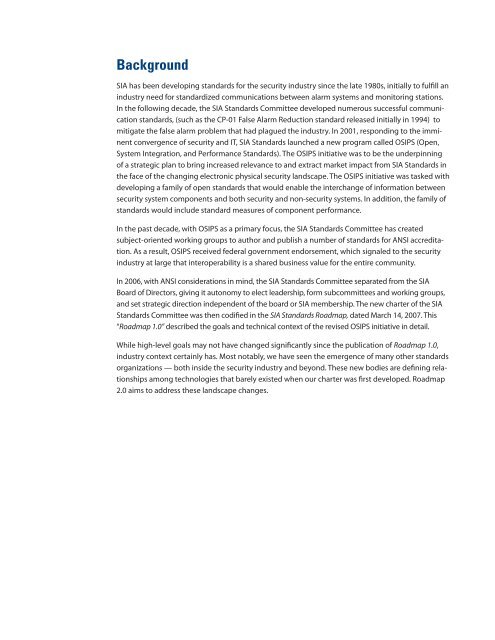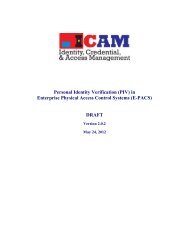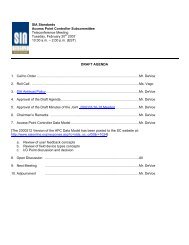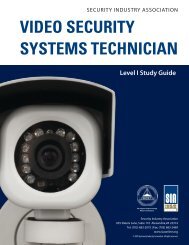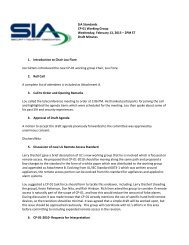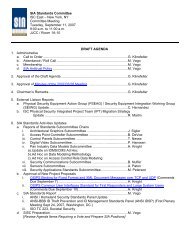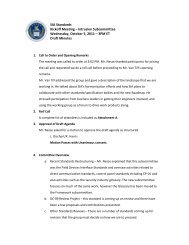SIA Standards Roadmap 2.0 - Security Industry Association
SIA Standards Roadmap 2.0 - Security Industry Association
SIA Standards Roadmap 2.0 - Security Industry Association
Create successful ePaper yourself
Turn your PDF publications into a flip-book with our unique Google optimized e-Paper software.
Background<br />
<strong>SIA</strong> has been developing standards for the security industry since the late 1980s, initially to fulfill an<br />
industry need for standardized communications between alarm systems and monitoring stations.<br />
In the following decade, the <strong>SIA</strong> <strong>Standards</strong> Committee developed numerous successful communication<br />
standards, (such as the CP-01 False Alarm Reduction standard released initially in 1994) to<br />
mitigate the false alarm problem that had plagued the industry. In 2001, responding to the imminent<br />
convergence of security and IT, <strong>SIA</strong> <strong>Standards</strong> launched a new program called OSIPS (Open,<br />
System Integration, and Performance <strong>Standards</strong>). The OSIPS initiative was to be the underpinning<br />
of a strategic plan to bring increased relevance to and extract market impact from <strong>SIA</strong> <strong>Standards</strong> in<br />
the face of the changing electronic physical security landscape. The OSIPS initiative was tasked with<br />
developing a family of open standards that would enable the interchange of information between<br />
security system components and both security and non-security systems. In addition, the family of<br />
standards would include standard measures of component performance.<br />
In the past decade, with OSIPS as a primary focus, the <strong>SIA</strong> <strong>Standards</strong> Committee has created<br />
subject-oriented working groups to author and publish a number of standards for ANSI accreditation.<br />
As a result, OSIPS received federal government endorsement, which signaled to the security<br />
industry at large that interoperability is a shared business value for the entire community.<br />
In 2006, with ANSI considerations in mind, the <strong>SIA</strong> <strong>Standards</strong> Committee separated from the <strong>SIA</strong><br />
Board of Directors, giving it autonomy to elect leadership, form subcommittees and working groups,<br />
and set strategic direction independent of the board or <strong>SIA</strong> membership. The new charter of the <strong>SIA</strong><br />
<strong>Standards</strong> Committee was then codified in the <strong>SIA</strong> <strong>Standards</strong> <strong>Roadmap</strong>, dated March 14, 2007. This<br />
“<strong>Roadmap</strong> 1.0” described the goals and technical context of the revised OSIPS initiative in detail.<br />
While high-level goals may not have changed significantly since the publication of <strong>Roadmap</strong> 1.0,<br />
industry context certainly has. Most notably, we have seen the emergence of many other standards<br />
organizations — both inside the security industry and beyond. These new bodies are defining relationships<br />
among technologies that barely existed when our charter was first developed. <strong>Roadmap</strong><br />
<strong>2.0</strong> aims to address these landscape changes.


